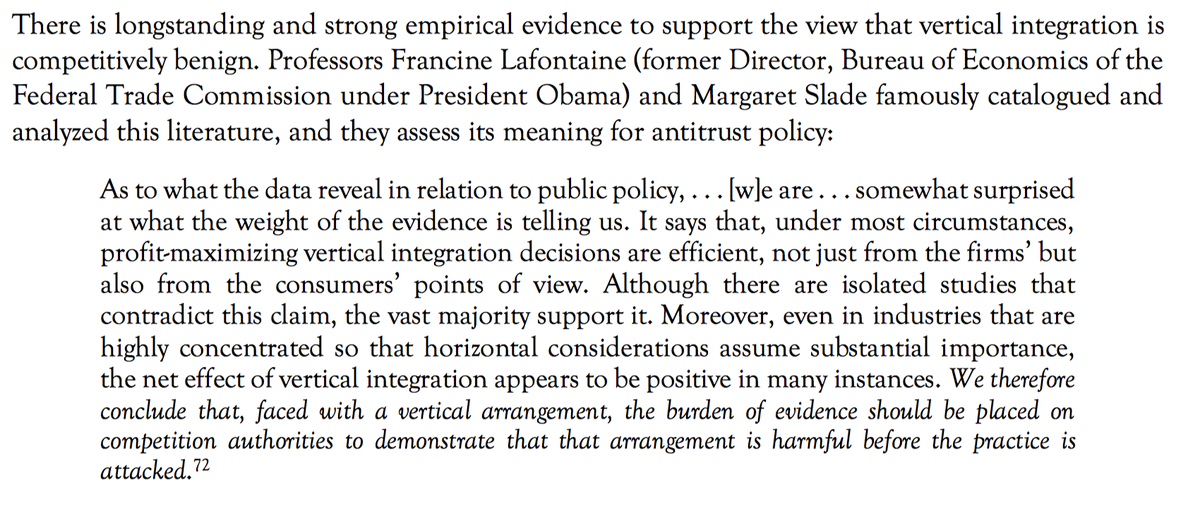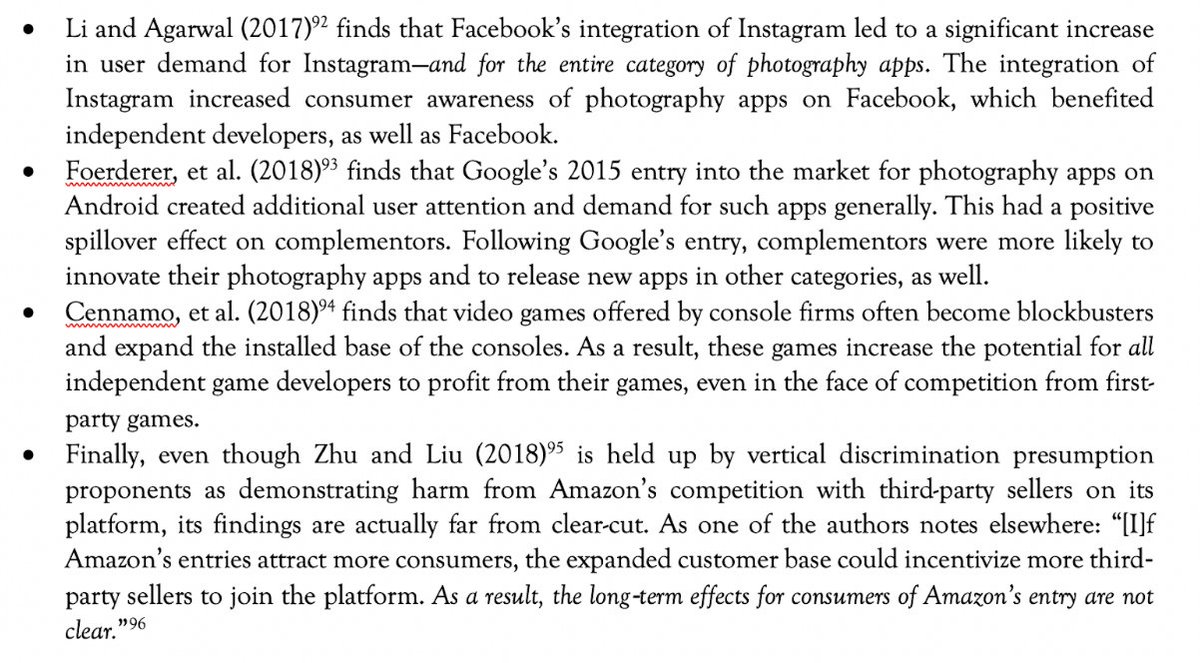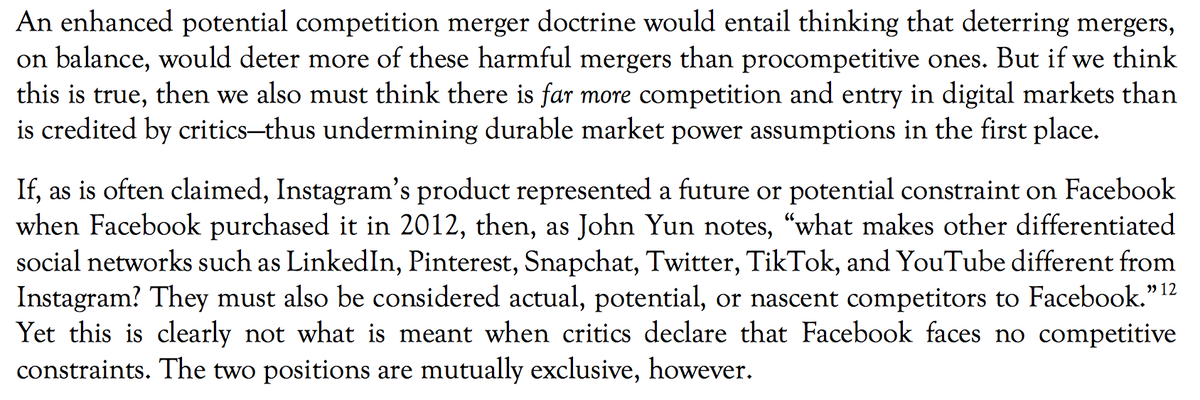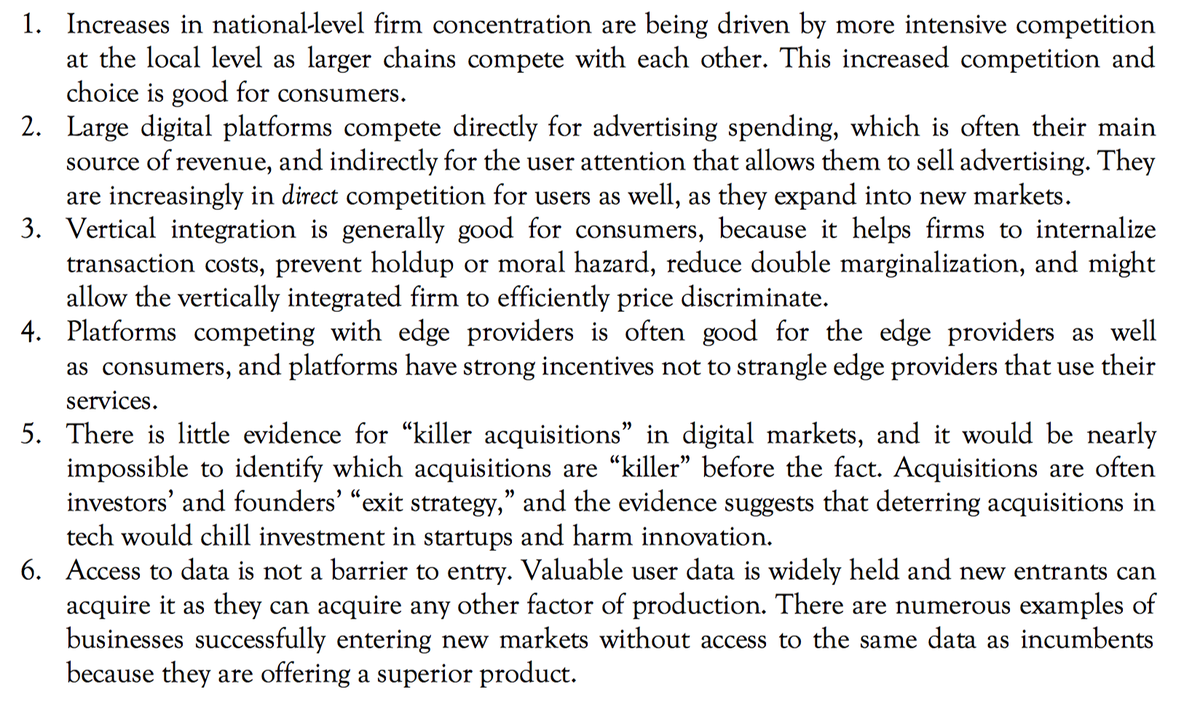I was asked to give comments to the House Judiciary Committee on its investigation into competition in digital markets. You can read them in full here: https://icle.xyz/3bzZ92L ">https://icle.xyz/3bzZ92L&q...
My comments focus on how weak the case for reform really is [THREAD]
My comments focus on how weak the case for reform really is [THREAD]
1a) Market concentration is rising nationally because it is *falling* locally.
National firms are expanding & competing with each other at local level. This helps explain the & #39;paradox& #39; of concentration rising as prices fall: we’re looking at concentration in the wrong place
National firms are expanding & competing with each other at local level. This helps explain the & #39;paradox& #39; of concentration rising as prices fall: we’re looking at concentration in the wrong place
1b) If this is confusing, imagine two worlds: one where every town in America has just one (independent) grocery store & one where every town has three stores, each a part of one of three national chains
1c) In the first world, national concentration would be low but local concentration high & local competition low; in the second, national concentration would be high, but local concentration low & local competition high
1d) Consumers would be a lot better off in the second world because each of them would have three firms competing for their business in the *relevant* (local) mkt. That’s the sort of world we’re moving towards, & focusing on national concentration completely misses it
2a) It’s a myth that competition enforcement has been lax.
Regulators have become MORE likely to challenge mergers since the 1970s, and only one non-challenged merger in the 2000s pointed to by critics actually shows signs of being bad for consumers in retrospective review
Regulators have become MORE likely to challenge mergers since the 1970s, and only one non-challenged merger in the 2000s pointed to by critics actually shows signs of being bad for consumers in retrospective review
2b) When people point to the number of Section 1/2 cases dismissed by courts, the vast majority of these are cases brought by *private plaintiffs* pursuing treble damages. These aren’t necessarily evidence of the law being weak
2c) Plaintiffs pursuing treble damages & settlement payouts may bring weak cases; dismissal rate is from a non-random sample. Meanwhile, agencies have brought, e.g., FTC v Surescripts, FTC v Qualcomm, US v. Amex, FTC v Intel, etc.
3b) Criticizing digital platforms for being ‘too big’ misunderstands network effects. For users, being big is the point: the more people using a particular service, the better it is for other users. Network effects mean large platforms are *good* for users to a 1st approximation
3c) The key is that these markets are contestable on the basis of quality. Zoom has disrupted a market where Microsoft, Cisco & Google are all huge because it offered a better product.
3d) Meanwhile, size isn& #39;t enough. It’s taken Google Flights 10yrs to develop a good enough product to mount a real challenge to travel search/booking incumbents — even w/ ITA merger & the world& #39;s largest search engine behind it
4a) Vertical integration is good for consumers and competition.
There is longstanding & strong empirical evidence that this is the case.
There is longstanding & strong empirical evidence that this is the case.
4c) Why is vertical integration a good thing? It helps firms adopt structures that internalize externalities & improve investm’t & commercializ’n decisions. One of the most vertically integrated consumer products is also one of the most popular & admired: iPhone
5a) Again and again, the evidence suggests that self-preferencing by digital platforms is good for consumers *and* third party businesses, because it grows the market for the things they’re selling.
5b) The big cases against self-preferencing by tech firms — like the EC’s Google Shopping case — haven’t found that self-preferencing is bad for *consumers*. They’ve found that it’s bad for *some competitors*. Those are not the same thing!
6a) There’s very little evidence that ‘killer acquisitions’ are a problem in most tech fields. The most widely cited paper is about pharma & likely pharma-specific characteristics are key to observed data. Even then, only 6% of acquisitions bear the hallmarks of being ‘killers’
6c) Meanwhile, the *entirety* of the evidence offered for proposals to radically change merger enforcement — like the UK’s Furman Report — is that one pharma paper
6d) In fact, the & #39;killer acquisitions& #39; story arguably does more to show how much entry there is & how *competitive* these markets are than to show that there is abuse of dominance in them
6e) If, say, Instagram was supposed to have been recognized as a potential competitor of FB’s in 2012, then what makes TikTok, Youtube, LinkedIn, Twitter different now? They must also be actual or potential competitors to Facebook right now, as John Yun notes:
7a) Access to data isn’t an anticompetitive barrier to entry.
It helps businesses refine their products, & new entrants can offer a product that is different enough to incumbents’ that data isn’t the key margin of competition. TikTok didn’t need Instagram’s data to succeed
It helps businesses refine their products, & new entrants can offer a product that is different enough to incumbents’ that data isn’t the key margin of competition. TikTok didn’t need Instagram’s data to succeed
7b) More data collection benefits most consumers but imposes costs on some. It’s not really comparable to a firm with market power skimping on inputs & reducing product quality b/c collection & use of more data isn’t a direct cost reduction & it’s used to improve the product
8a) To sum up: there are lots of args in favor of more antitrust intervention in digital mkts. That doesn’t mean the arguments are *good* & many are pretty flimsy, in fact. Given the obvious benefits of the digital platforms we have, calls for major intervention just don’t add up
8b) Last but not least, many thanks to @kristianstout and @s8mb for their help in preparing my submission! [END THREAD]

 Read on Twitter
Read on Twitter![I was asked to give comments to the House Judiciary Committee on its investigation into competition in digital markets. You can read them in full here: https://icle.xyz/3bzZ92L&q... My comments focus on how weak the case for reform really is [THREAD] I was asked to give comments to the House Judiciary Committee on its investigation into competition in digital markets. You can read them in full here: https://icle.xyz/3bzZ92L&q... My comments focus on how weak the case for reform really is [THREAD]](https://pbs.twimg.com/media/EWUP4jwVAAE7_lA.png)






